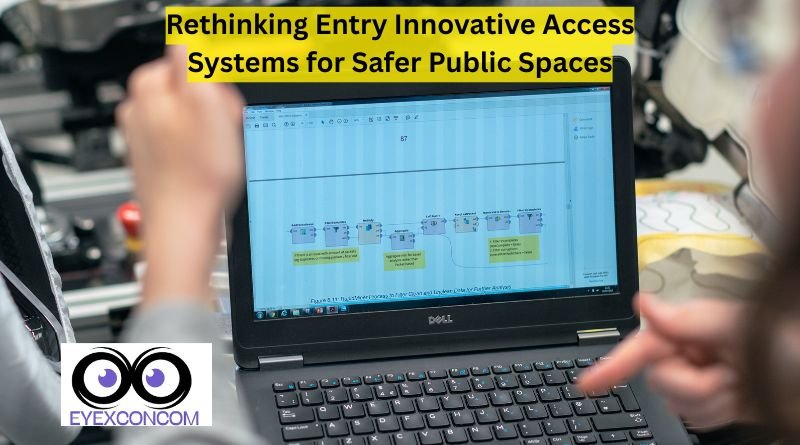Modern public spaces demand more than open doors. Parks, transport hubs, government buildings, and mixed-use complexes face challenges around safety, accessibility, and efficient crowd management. Innovative access systems are responding with cutting-edge technology, balancing the right to enter with the need to protect people and property. This post explores the latest solutions shaping the future of access in public spaces and explains why they matter for the communities that use them.
How Modern Access Systems Change Public Spaces
Digital transformation is redefining what it means to access a public facility. Automation, smart hardware, and connected platforms are enabling new approaches to security and mobility that were once limited to high-security zones.
Smart Locks and Digital Credentials
Traditional keys have significant limitations in public settings. They’re easy to lose, hard to track, and costly to replace at scale. Enter smart locks and digital credentialing, which use mobile devices, RFID cards, or biometric data to grant access. These systems offer:
- Remote management: Administrators can adapt permissions instantly, removing or adding access remotely.
- Audit trails: Every entry and exit is logged, enhancing accountability and incident response.
- User convenience: Visitors and staff can use mobile devices or cards they already carry.
One notable example is the titan door locks, which pair Wi-Fi connectivity and app-based management. These systems allow property managers to change permissions or check lock statuses in real time, optimizing both convenience and control.
Biometric Authentication
Biometrics add a new layer of security and speed. Systems that verify identity through fingerprint, facial recognition, or even gait analysis are increasingly visible in public buildings.
Benefits include:
- Contactless entry: Minimizing touchpoints reduces the spread of germs and speeds up entry.
- Personalized access: Entry permissions can be tightly customized for contractors, staff, or guests.
- Higher security: Biometric markers are difficult to duplicate or share.
Still, these technologies raise privacy concerns. Public administrators must balance efficient access with compliance regarding data use and storage.
Automated Barriers and Turnstiles
Physical barriers manage and optimize the flow of people. Automated turnstiles with integrated sensors only unlock for authorized individuals. These are common at transit stations, stadiums, and office lobbies.
Advantages include:
- Crowd control: Barriers regulate the pace of entry during busy times.
- Integration: Many systems now link seamlessly with digital credential tools or health-screening kiosks.
- Incident response: Locks or barriers can be engaged instantly during emergencies.
Some cities have piloted turnstiles that read digital passes or utilize QR codes generated by an app, improving throughput during peak periods.
Innovations in Accessibility
Access systems aren’t just about keeping people out; they’re also about welcoming everyone in. Recent innovations are positively impacting accessibility and user experience.
Voice-Activated Entrances and Smart Sensors
Voice command interfaces and smart sensors are becoming more common, reducing the need for touch. For visitors with disabilities, these tools can offer new levels of independence.
Smart sensors can detect wheelchairs or guide dogs, opening doors automatically and providing auditory or visual cues for navigation. These inclusive features benefit everyone, especially those for whom traditional locks or doorknobs are barriers.
Customizable Access Permissions
Modern digital systems make it easy to grant temporary or restricted access to specific groups. For example, community centers can give seniors or volunteer groups after-hours access without the risks associated with key duplication. Libraries use apps that allow parents to manage their child’s visiting privileges through online platforms.
Safety and Data Considerations
Security and privacy are deeply intertwined as access technology evolves. The smarter the system, the more data it collects.
Data Security
Any system gathering biometric or credentialing data must follow strict guidelines to avoid breaches. Top platforms rely on encrypted transmission and storage to safeguard sensitive information. Administrators should perform regular audits and transparency reporting to maintain public trust.
Emergency Protocols
Smart access can improve emergency response. Systems often feature override functions that allow first responders entry while locking down other zones as needed. Notifications can be sent directly to emergency services for faster intervention.
Maintenance and Redundancy
Automated access points need consistent upkeep. Maintenance schedules, hardware redundancy, and backup power supplies are central to preventing system failures that could lead to locked-out users or, worse, unsafe situations.
Digital Inclusion and Future Challenges
Despite clear benefits, innovative entry systems cannot solve all challenges on their own. Digital divides can leave some visitors behind:
- Digital literacy gaps: Not all users are comfortable with app-based or biometric systems; alternative methods must remain available.
- Cost: Cutting-edge systems can be expensive to implement and maintain, particularly in resource-strapped municipalities.
- Policy lag: Legislation and standards are still catching up to the rapid pace of technological change.
Forward-thinking planners consider these factors, ensuring solutions work for as many people as possible while remaining adaptable to new standards and expectations.
Looking Forward A Safer, More Accessible Public Realm
Innovative access systems are setting higher standards for public space safety, convenience, and inclusivity. From digital credentials and biometric scans to automated barriers and voice-activated entry, each advancement must be balanced by attention to privacy, maintenance, and user inclusiveness. The best solutions won’t just enable entry but will foster welcoming, flexible spaces that serve diverse communities and evolving needs. As technology advances, ongoing dialogue among builders, policymakers, and users will shape how future public spaces stay safe, open, and engaging.

